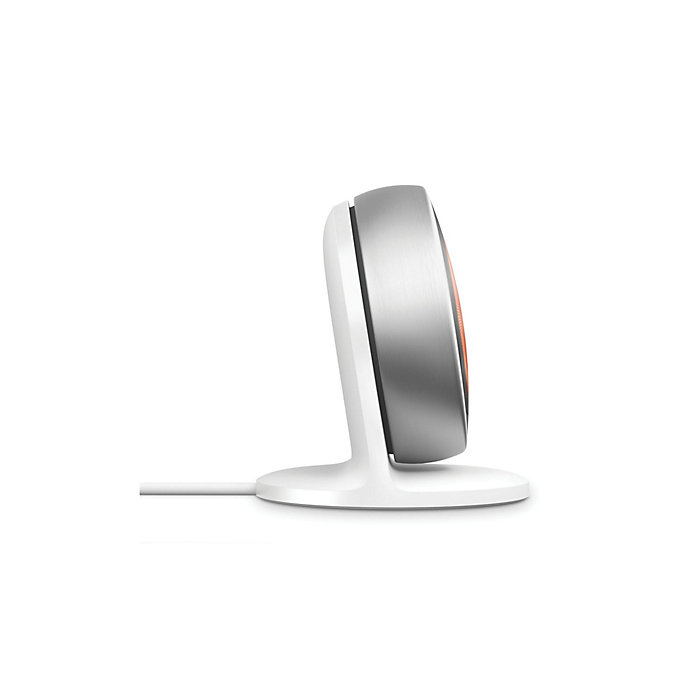Hi, so I have been installing Nest thermostats in my home, a couple of which need to be wall mounted. They need a 12V supply which can be provided from the "Heatlink" but this isn't possible so I have chased out the necessary and run a 12V supply using a bell transformer. The cable run from transformer to thermostat is about 4 metres. All seemed OK until I realised that the thermostats were being heated to about 30C by heat from the cables! I think that low voltage = higher A but I'm surprised that the cable is generating or conducting heat given that the energy required by the Nest thermostat is so low (quoted as less than 1KWh / month). I've tried an LED lighting transformer in case the Bell wire transformer was the problem but the result is the same. Is there anything I can do without having to rip out the freshly re-plastered wall?! Thanks in anticipation. Rob
You are using an out of date browser. It may not display this or other websites correctly.
You should upgrade or use an alternative browser.
You should upgrade or use an alternative browser.
12V supply heating up Nest Thermostat!
- Thread starter sanderr2
- Start date
Sponsored Links
A bell transformer will almost certainly be 12 volts AC while the Nest almost certainly requires 12 volts DC.
Putting AC into a device that wants DC can damage the device and this can cause the over heating.
the term ""LED lighting transformer"" covers a wide range of devices with outputs that may be anything but 12 volts DC.
Putting AC into a device that wants DC can damage the device and this can cause the over heating.
the term ""LED lighting transformer"" covers a wide range of devices with outputs that may be anything but 12 volts DC.
Sponsored Links
A bell transformer is unregulated, the output voltage will vary depending on the load. They are also intended for intermittent use, not continuously powering a load.
What size are the cables between the Nest and the transformer?
What size are the cables between the Nest and the transformer?
No such thing. Transformers are AC devices.Thanks Bernard. I'll source a 12 volt DC transformer!
Which clearly stated ‘rated frequency 50/60 Hz’ That is AC. As I said transformers are AC devices.
From the datasheet posted
Technical DataBell TransformerTechnical Specification Function Rated Input VoltageRated Output VoltageRated FrequencyRated Power OutputInstallationConsumptionFinishService PeriodInstallationTerminal SizeBell Transformer Module230 V AC8, 12, 24 V50 / 60 Hz8 VA8V = 1A12V = 0.667A24V = 0.333AIndoor1.15 WWhite glossContinuous OperationSuitable on 35mm DIN RailAccepts up to 16mm² Cable
I realised that the thermostats were being heated to about 30C by heat from the cables!
What exactly have you measured or observed to come to that conclusion?
I’d say it’s more likely that something in the Nest device is getting warm and the cables are conducting away some of that heat.
- Joined
- 27 Jan 2008
- Messages
- 24,901
- Reaction score
- 2,877
- Location
- Llanfair Caereinion, Nr Welshpool
- Country

Nest claim the supply from their power supply is 12 VDC however it must be a very smooth 12 VDC as it also carries the info between the heat link and the thermostat, and when the thermostat is using wifi for data the power supply is 5 volt from a USB outlet, as to if the voltage tells the thermostat if sending and receiving hard wired or wifi I don't know, but since it asks for 5 volt why give it 12 volt.
There must be a rectifier in the thermostat as it says it does not matter which way around the wires go, so hopefully it will not damage the unit, however I do see the problem this
 does not really fit on a wall, as to if you can get a USB unit for wall mount I don't know?
does not really fit on a wall, as to if you can get a USB unit for wall mount I don't know?
There must be a rectifier in the thermostat as it says it does not matter which way around the wires go, so hopefully it will not damage the unit, however I do see the problem this

- Joined
- 17 Aug 2010
- Messages
- 2,866
- Reaction score
- 497
- Country

I know reading isn't your strong point, but see if you can manage this part of the data sheet in big letters:Which clearly stated ‘rated frequency 50/60 Hz’ That is AC. As I said transformers are AC devices.
"It is DIN rail mountable and changes 240V AC power into either 8, 12 or 24V DC"
I know reading isn't your strong point, but see if you can manage this part of the data sheet in big letters:
"It is DIN rail mountable and changes 240V AC power into either 8, 12 or 24V DC"
There is NO NEED to be downright rude. That is hidden in the description not the specifications which I and Adam read. It also means it is a DC power supply not a transformer. The manufacturers are idiots.
The question about using a proprietary 12v power supply with the Nest thermostat has been asked before. This post, contains the details of what Nest say is required.
DIYnot Local
Staff member
If you need to find a tradesperson to get your job done, please try our local search below, or if you are doing it yourself you can find suppliers local to you.
Select the supplier or trade you require, enter your location to begin your search.
Please select a service and enter a location to continue...
Are you a trade or supplier? You can create your listing free at DIYnot Local
Sponsored Links
Similar threads
- Replies
- 11
- Views
- 6K
- Replies
- 12
- Views
- 26K
